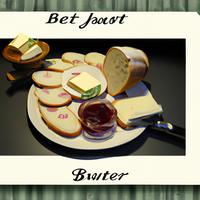
1 serving (100 grams) contains 350 calories, 5.0 grams of protein, 15.0 grams of fat, and 45.0 grams of carbohydrates.

Log this food in SnapCalorie

Nutrition Information
Calories |
833.3 | ||
|---|---|---|---|
% Daily Value* |
|||
| Total Fat | 35.7 g | 45% | |
| Saturated Fat | 19.0 g | 95% | |
| Polyunsaturated Fat | 0 g | ||
| Cholesterol | 71.4 mg | 23% | |
| Sodium | 714.3 mg | 31% | |
| Total Carbohydrates | 107.1 g | 38% | |
| Dietary Fiber | 4.8 g | 17% | |
| Sugars | 47.6 g | ||
| protein | 11.9 g | 23% | |
| Vitamin D | 0 mcg | 0% | |
| Calcium | 119.0 mg | 9% | |
| Iron | 3.6 mg | 20% | |
| Potassium | 238.1 mg | 5% | |
* Percent Daily Values are based on a 2,000 calorie diet. Your daily values may be higher or lower depending on your calorie needs.
Food Attributes
Source of Calories
About Butter and jam bread
Butter and Jam Bread is a simple yet beloved treat often enjoyed as a breakfast or snack worldwide. Originating as a quick, homemade delicacy, it typically consists of a slice of bread—white, whole-grain, or artisanal—spread with creamy butter and a layer of fruit jam, such as strawberry, raspberry, or apricot. While its roots are global, variations appear in European, American, and other cuisines. Nutritionally, it offers a mix of carbohydrates, fats, and sugars. Whole-grain bread provides fiber and essential nutrients, while butter adds healthy fats but is calorie-dense. Jam brings the sweetness, often made from fruit, but can contain added sugars depending on the brand. Moderation is key, as the combination is energy-rich but can lead to excessive calorie intake if over-consumed. Pairing it with a fresh fruit or protein source can enhance its nutritional balance.



